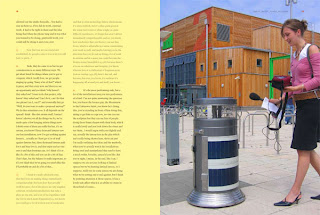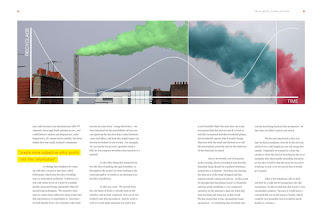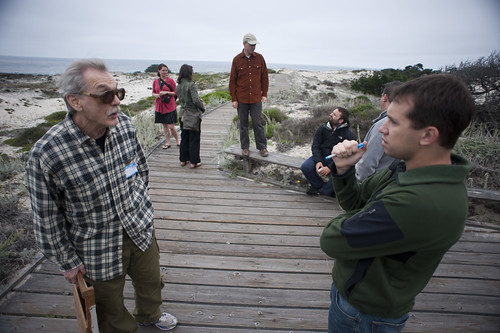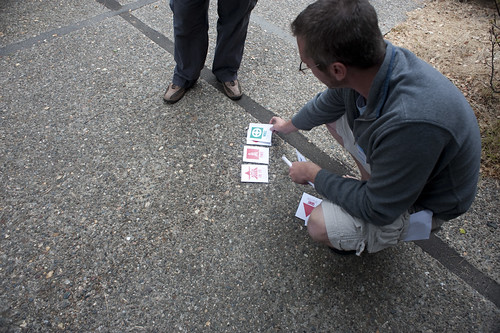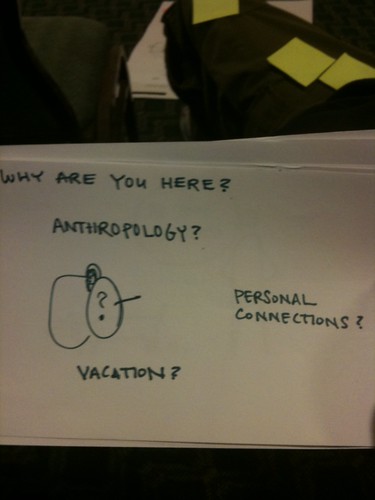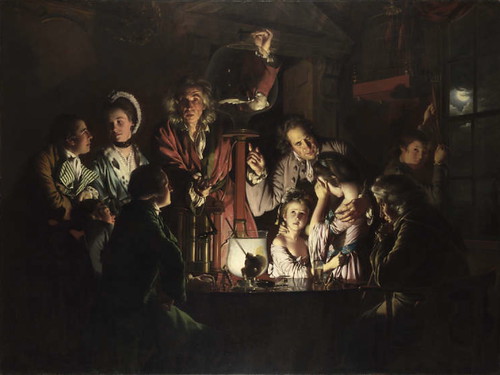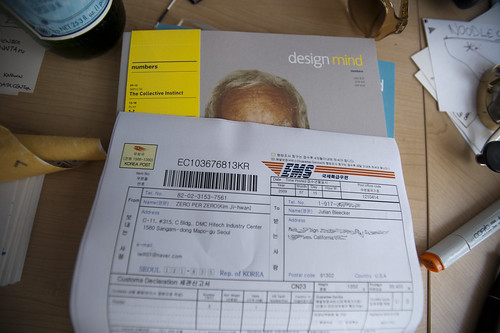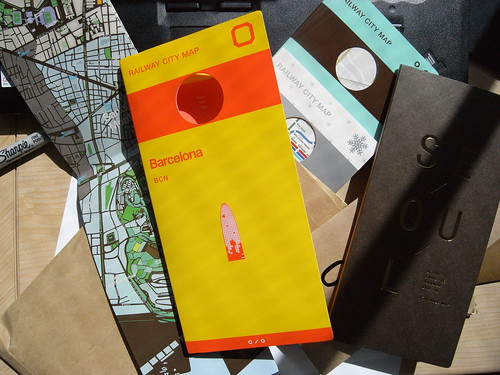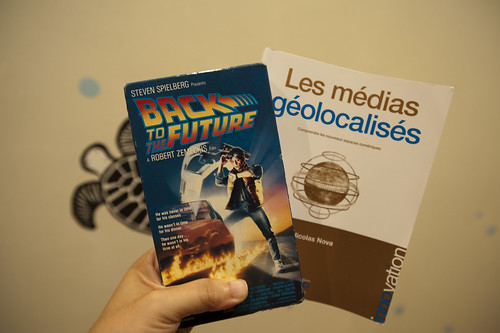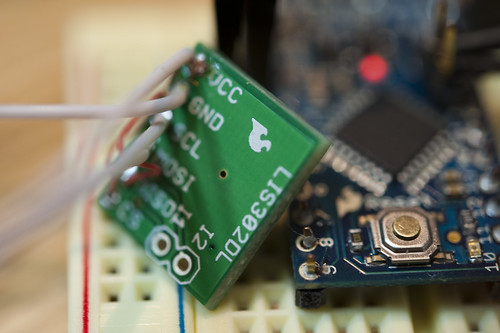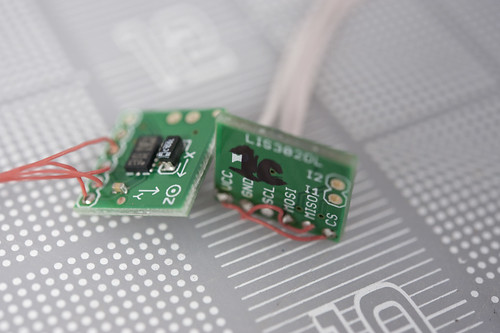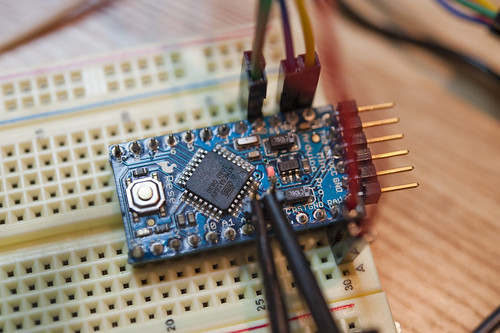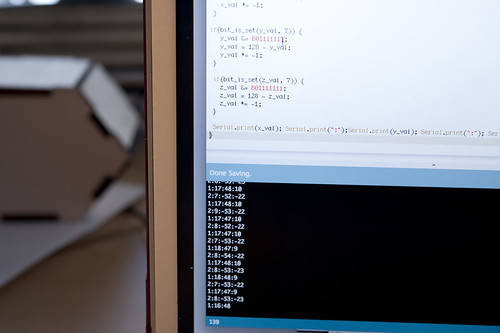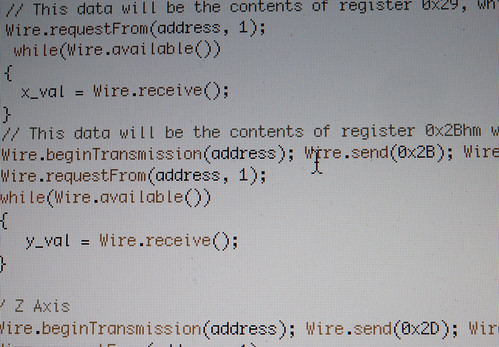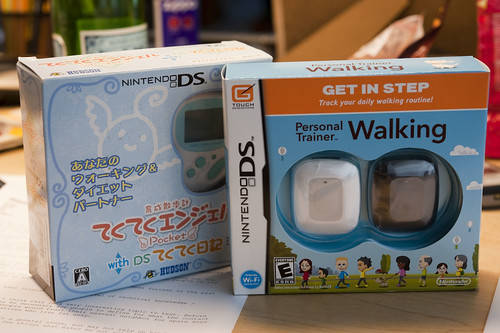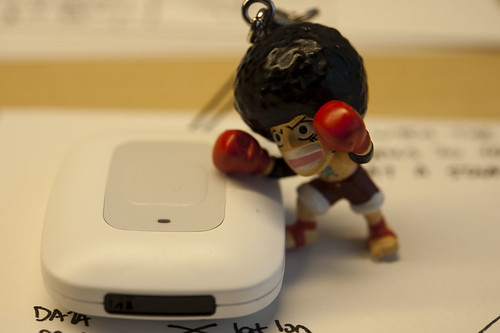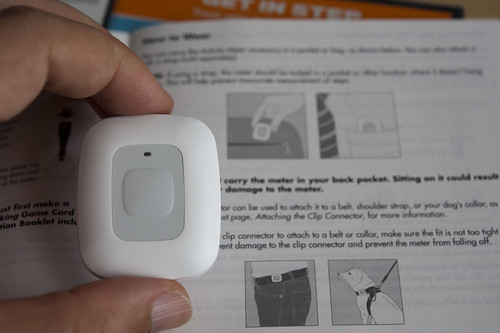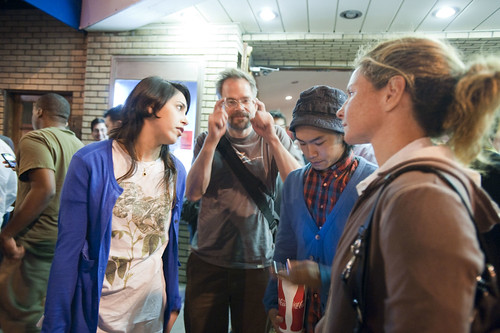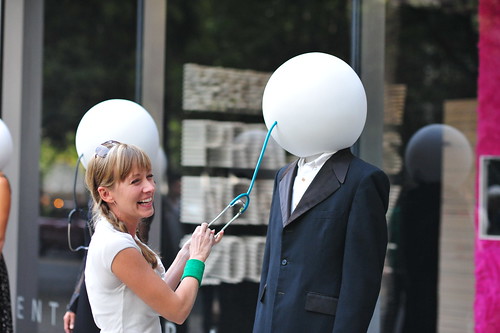This weekend, I was at this un-conference, event, workshop called The Overlap in the misty Pacific Grove along the coast of California near Monterey. It’s a mix of designers and self-described business types and some who were both, mixing it up with a variety of loosely structured “technologies” to explore, test, probe and be human.
So far we have learned the ins-and-outs of story telling, had an opportunity to share something — mostly some idea we are or would like to explore further. Some of these were propositions for new kinds of services that might exist in the world of things on the line. Others were larger social experiments, such as discovering ways to replace paper cups with something else, which I found to be quite an intriguing problem, especially because it may not be another cup made of some other sort of material, but perhaps a behavior and “practices” shift. (Thinking about design as something that does not necessarily result in an object or material is of course not entirely new, but giving this challenge some specificity in this regard was fun.)
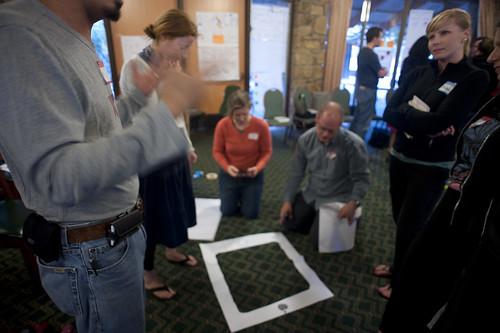
Body Storming to discover in a rapid prototyping fashion (15 minutes to explore, discover, present) what the new news might be.
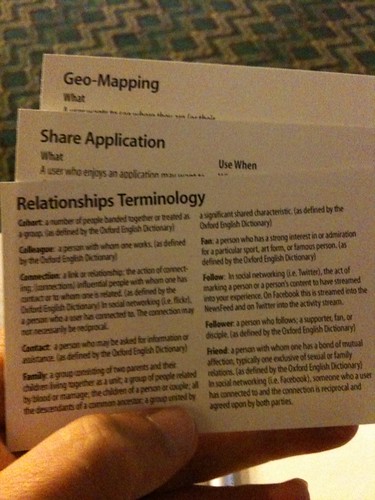
Some prototype cards by
Christian Crumlish brought for exploration. These describe some design patterns for social behaviors seen often in online contexts. Much more
here. Great stuff.
We devised a technology for ourselves during a lunch break that consisted of a challenge — having a conversation with someone in which you asked no questions. This sounds weird, and it is, which means that it zips you out of your comfort zone and forces you to do more listening and consideration of what you say and ultimately puts conversations onto new trajectories. So, rather than saying half-thought things — “how did you like that?”, “what did that mean to you?”, “where did you study?” — or all the other things that force conversations along typical paths. No where near a proven tactic for provoking and probing and seeing things a little differently or discovering curious vantage points, but an intriguing exercise nonetheless.
The final exercise I participated in with was around the broad range of ideas that might be poorly pigeon holed under “innovation design” or something — strategies and tactics and practices for encouraging new thinking and creating new, non-incremental things/processes/thoughts. It is not surprising that there were some people interested in this area. Most of our activities were around discussions about this, anecdotes, common problems and issues — but, we were challenged to find a mechanism for embodiment of the challenge, or a “technology” of some sort.
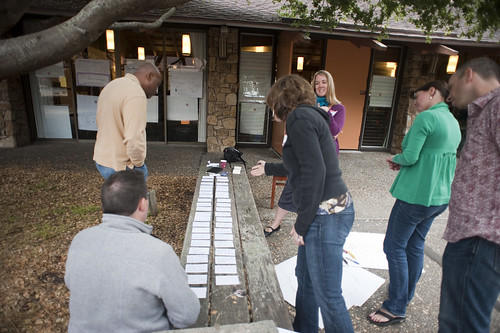
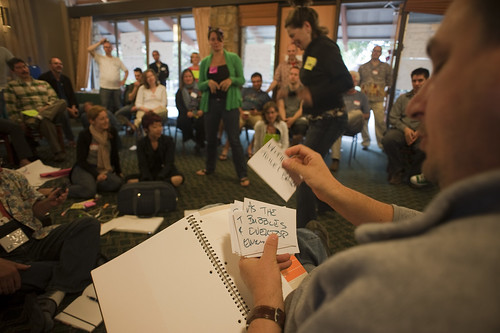
What ended up happening was the creation of a prototype children’s story — a story you would want to tell a child who you hoped would become an innovator. Well — we had about 15 minutes but described such a story and dramatized it when we presented. The beats of it were around a restless young girl who keeps being told “no” to the curious things she wants to do — put pickles on her ice cream; play with the man on the moon; paint the carpet purple. Finally when she asks to give the family cat a bath in the toilet, her mom tells her fine — give the cat a bath in the toilet, of course not expecting that such could happen, or in exasperation. The young girl proceeds to do such, succeeding ultimately through clever use of the fact that the bowl prevents the cat from escaping, a sponge-on-a-rope that becomes a distracting toy, liquid soap, and a flusher that provides a suitable rinse. The moral is to reflect on the way filters impede the expression of our imagination based on convention, conformity and all the other things that discipline us as adults. And, this “technology” is worth exploring — the design challenge of writing a children’s story to convey a design principle or as an expression of a design brief.
Besides the story, and whatever you may think of it I was quite intrigued by two things. First, how we moved from the “meta” talk on the subject to an expression in the form of this simple story. We had been talking over lunch and then with another participant who it turns out (quite unexpectedly for me) had been a Navy SEAL. He dropped a few nuggets on us related to the thinking and training that goes into such things which are related — initiative, following ones own compass, improvisation, continuing in the face of exceptionally withering fatigue, the differences between warriors and soldiers, and these sorts of things. Another point that came up was Michael Dila’s description of Innovation Parkour, and a previous exercise at another event in which the challenge was (in a limited time) to convince a group of people to try buttermilk, which is particularly nasty stuff if you’re not already used to it. It became known as the “Buttermilk Insurgency” in which one team managed, in the 15 or 20 minutes allocated, to convince a kitchen staff across the way to make buttermilk pancakes, thus shifting the assumption around forcing someone to drink a towering glass of the stuff. So we discussed this challenge of reframing things and some how that lead to a short discussion of parenting — getting kids to try things that they don’t want and disallowing them from doing things they shouldn’t. This point came up directly — “yeah, and they’ll say — can I wash the cat in the toilet?” Somehow this started the story, where we ourselves reversed our assumptions and looked at it from the positive side. How do you encourage unconventional, presumably preposterous things and not assume failed results?
Like, for example, my current favorite — imagine what someone would say a year ago if you told them that Middle East politics would be inflected by people yammering in 140 character messages. Or, even more plainly — against all the odds of thick, broad, rich forms of networked, digital communication — something like Twitter happens. Which is not a statement about it efficacy or its importance or its permanence — just that things happen, and assuming failure, or saying “it’ll never happen. move onto something else” probably says more about the person who utters this than it does about the discussion they interrupt.
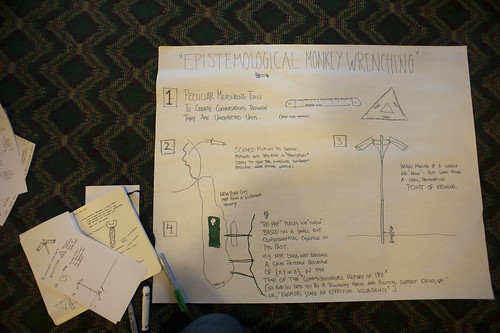
Testing Ideas.
Anyway, there was much more, but those were some highlights that stuck in my mind. Oh, also the great opportunity to “test” some of the ideas and principles around a few projects that I ended up lumping under the rubric “Epistemological Monkeywrenching.” If nothing else, it forced me to find and articulate the relationships between several projects that compete for my attention. And I think I found the linkages, at least the outlines of the relationships. So, thanks. Thanks to all those 49 people who I met for the first time, and thanks to Dave Gray of XPLANE for the invitation.
Why do I blog this? To capture a few notes before the escape the brain and remind myself why I spent the weekend in the beach woods of Pacific Grove. Overlap 2009. 50 attendees. Meeting 49 new people who I never met before. And the word “design” was part of the material. And I got to ask questions to continue my exploration and design apprenticeship. Notes to self:
See Starfire Director’s Cut (via Erin Liman)
Read more about Paul Rand (via Chris Finlay)
Discover who Chris Conley is (via Chris Finlay)
Asilomar Conference Center is also where quite recently, as reported in the NYT a top secret invite-only event was held by artificial intelligence experts who are now worrying that robots may outsmart humans. (I mean…clearly these scientists NEVER watch ANY sci-fi. Hello? Skynet? BSG? Pfft. Buffoons. Spend a weekend at the Bleecker household with MY DVD collection of nervous Sci-Fi and you’ll be convinced you should become a wood sculpter.)
This is also where “..in 1975, the world’s leading biologists also met at Asilomar to discuss the new ability to reshape life by swapping genetic material among organisms. Concerned about possible biohazards and ethical questions, scientists had halted certain experiments. The conference led to guidelines for recombinant DNA research, enabling experimentation to continue.”
And then, also — the Jackson Family had their enormous family reunion here this weekend. And someone had their 80th birthday celebration, as well. So, like — it all matters.
Overlap 09 Lazy Susan from Julian Bleecker on Vimeo.
Continue reading Overlap 09
